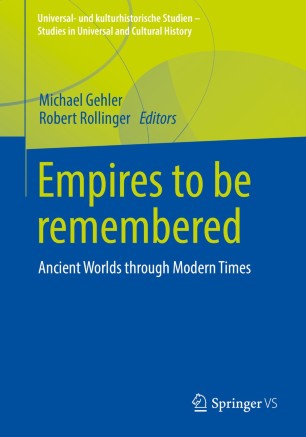Gehler, Michael & Robert Rollinger (eds.). 2022. Empires to be remembered. Ancient Worlds through Modern Times. Wiesbaden: Springer.

By applying a comparative approach the volume focuses on a select group of „empires“ which are generally not in the focus of empires studies. They are studied in detail and analyzed due to a strict concept that takes into account real history and reception history as well. Reception history becomes more and more an important element in empire studies although this topic is still often more or less underdeveloped. The volume singles out a series of such “forgotten empires”. It aims to provide a methodologically clearly structured as well as a uniform and consistent approach. It develops a general set of questions that help to compare and distinguish these entities. This way the volume intends to examine and to illuminate empires that are generally ignored by modern scholarship.





